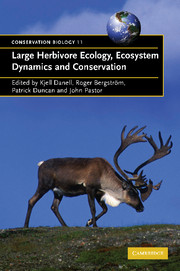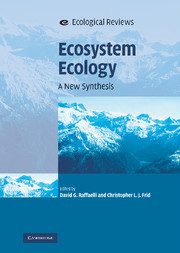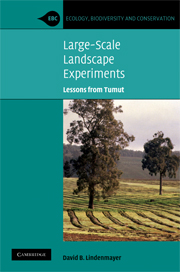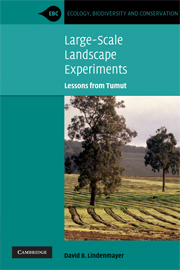Large Herbivore Ecology, Ecosystem Dynamics and Conservation
Most large herbivores require some type of management within their habitats. Some populations of large herbivores are at the brink of extinction, some are under discussion for reintroduction, whilst others already occur in dense populations causing conflicts with other land use. Large herbivores are the major drivers for forming the shape and function of terrestrial ecosystems. This 2006 book addresses the scientifically based action plans to manage both the large herbivore populations and their habitats worldwide. It covers the processes by which large herbivores not only affect their environment (e.g. grazing) but are affected by it (e.g. nutrient cycling) and the management strategies required. Also discussed are new modeling techniques, which help assess integration processes in a landscape context, as well as assessing the consequences of new developments in the processes of conservation. This book will be essential reading for all involved in the management of both large herbivores and natural resources.
- Provides an updated review of existing knowledge on the impact of large mammalian herbivores on species richness, ecosystem structure and function in major habitats of the world
- Gives a broad scientific and ecological background to problems related to large herbivores in different parts of the world
- Examines the conservation of herbivores themselves, and also the conservation of their habitats
Reviews & endorsements
'The mixture of authors is well balanced and ranges form young to established scientists. The collection of texts covers all important topics regarding large herbivore ecology from the point of natural sciences … well-edited … Large Herbivore Ecology, Ecosystem Dynamics and Conservation is a very readable book for beginners and specialists alike who wish to broaden their knowledge of the effects of large herbivores on ecosystem dynamics.' Basic and Applied Ecology
Product details
May 2006Paperback
9780521536875
524 pages
230 × 154 × 24 mm
0.83kg
76 b/w illus. 17 tables
Available
Table of Contents
- Preface
- Introduction
- 1. Large herbivores across biomes Hervé Fritz and Anne Loison
- 2. Living in a seasonal environment Jon Moen, Reidar Andersen and Andrew W. Illius
- 3. Linking functional responses and foraging behaviour to population dynamics Andrew W. Illius
- 4. Impacts of large herbivores on plant community structure and dynamics Alison J. Hester, Margareta Bergman, Glenn R. Iason and Jon Moen
- 5. Long-term effects of herbivory on plant diversity and functional types in arid ecosystems David Ward
- 6. The influence of large herbivores on tree recruitment and forest dynamics Robin Gill
- 7. Large herbivores: missing partners of western-European light-demanding tree and shrub species? Frans W. M. Vera, Elisabeth S. Bakker and Han Olff
- 8. Frugivory in large mammalian herbivores Richard Bodmer and David Ward
- 9. Large herbivores as sources of disturbance in ecosystems N. Thompson Hobbs
- 10. The roles of large herbivores in ecosystem nutrient cycles John P. Pastor, Yosef Cohen and N. Thompson Hobbs
- 11. Large herbivores in heterogeneous grassland ecosystems Douglas A. Frank
- 12. Modelling of large herbivore - vegetation interactions in a landscape context Peter J. Weisberg, Michael B. Coughenour and Harald Bugmann
- 13. Effects of large herbivores on other fauna Otso Suominen and Kjell Danell
- 14. The future role of large carnivores on terrestrial trophic interactions: the northern temperate view Reidar Andersen, John D. C. Linnell and Erling J. Solberg
- 15. Restoring the functions of grazed ecosystems Ian J. Gordon
- 16. Themes and future directions in herbivore-ecosystem interactions and conservation John Pastor, Kjell Danell, Roger Bergström and Patrick Duncan
- References
- Index.










